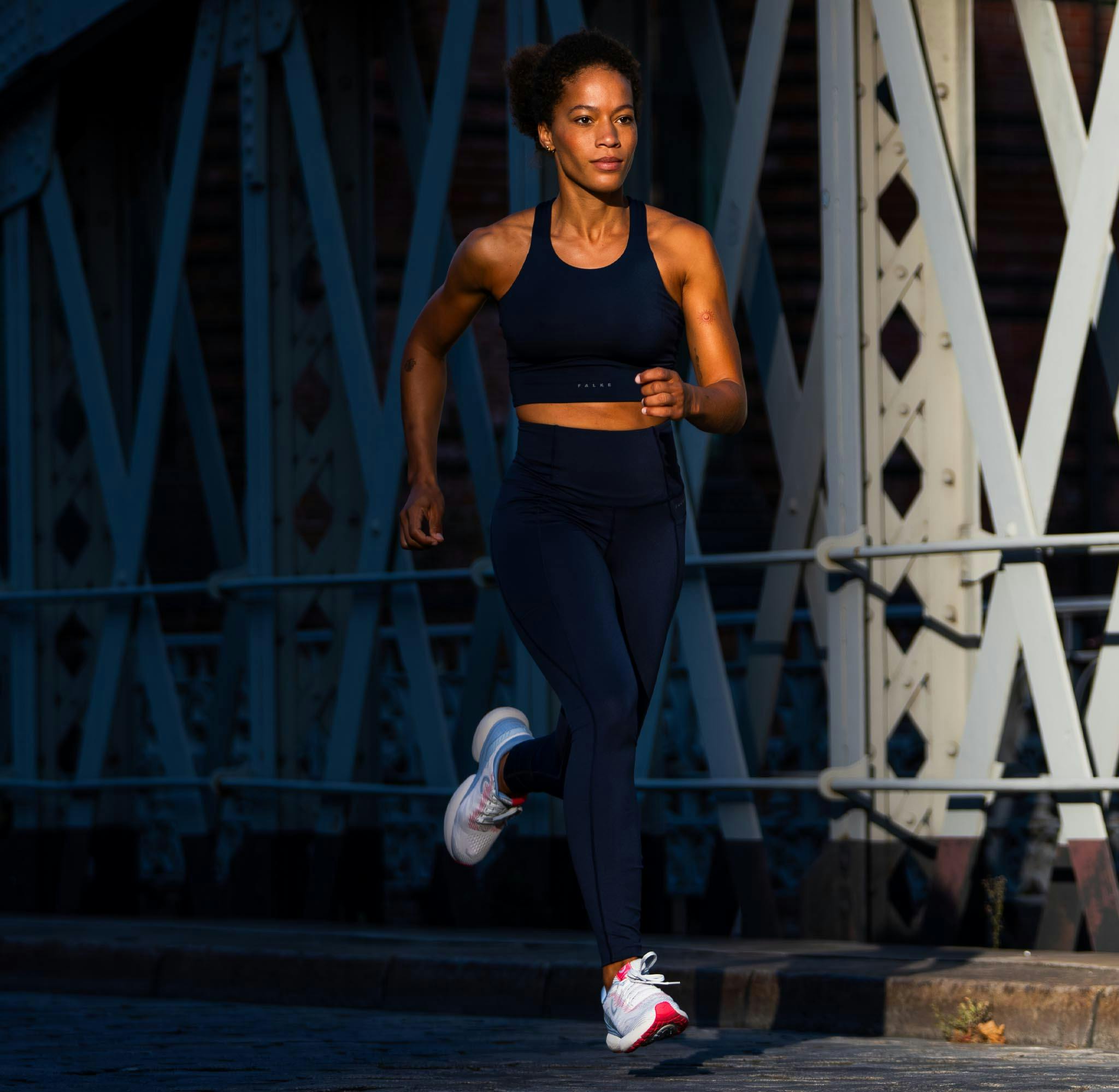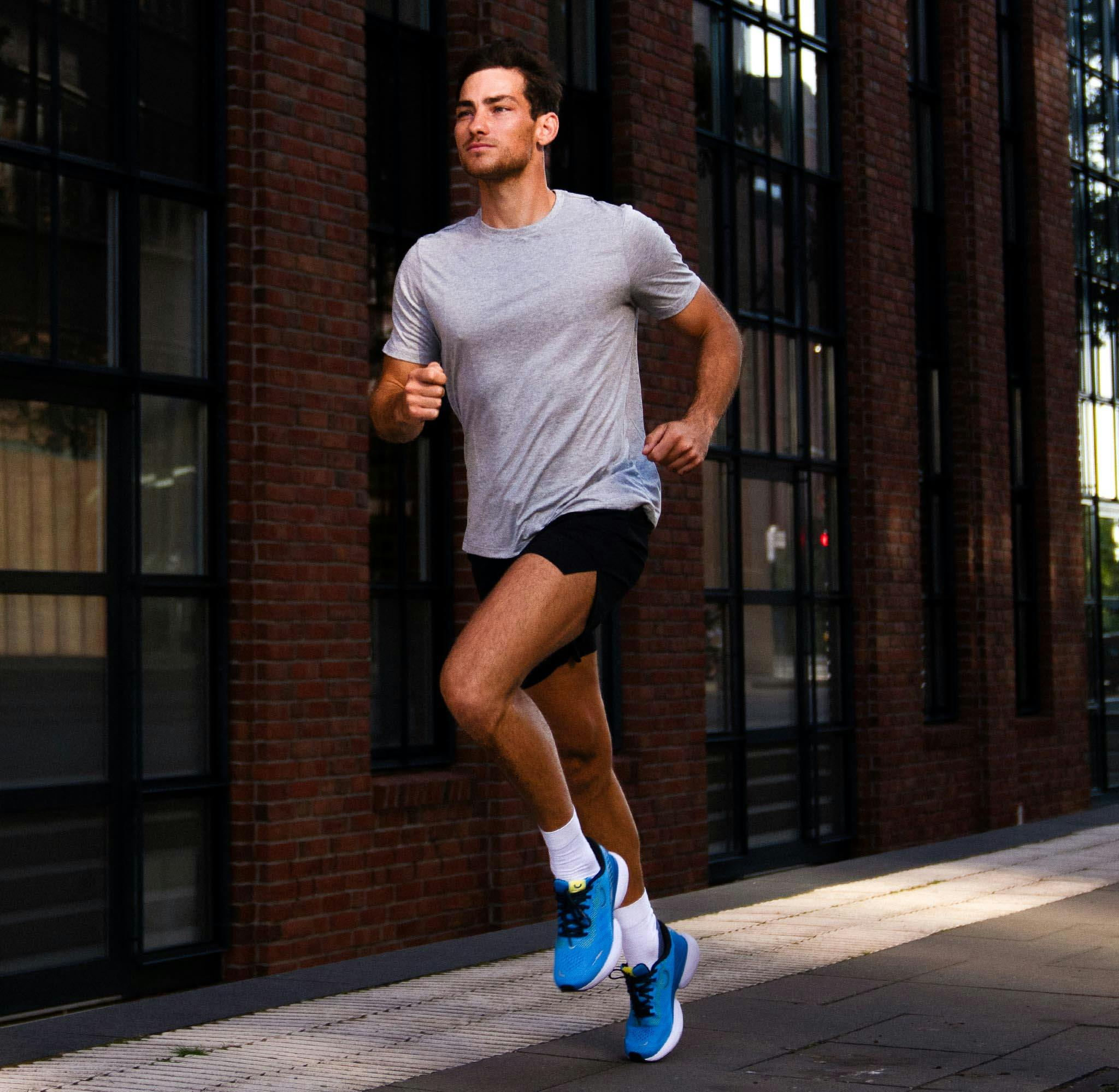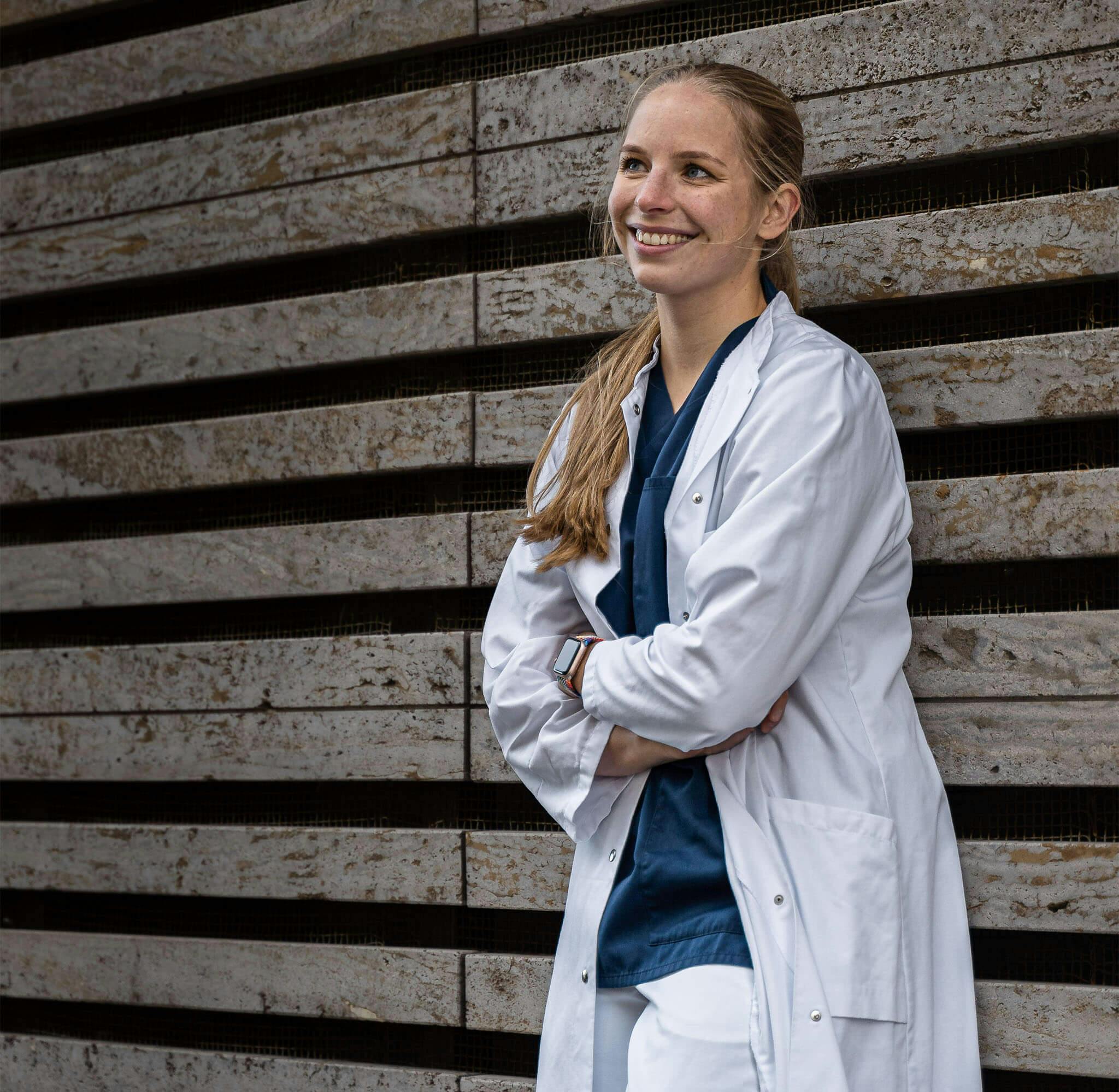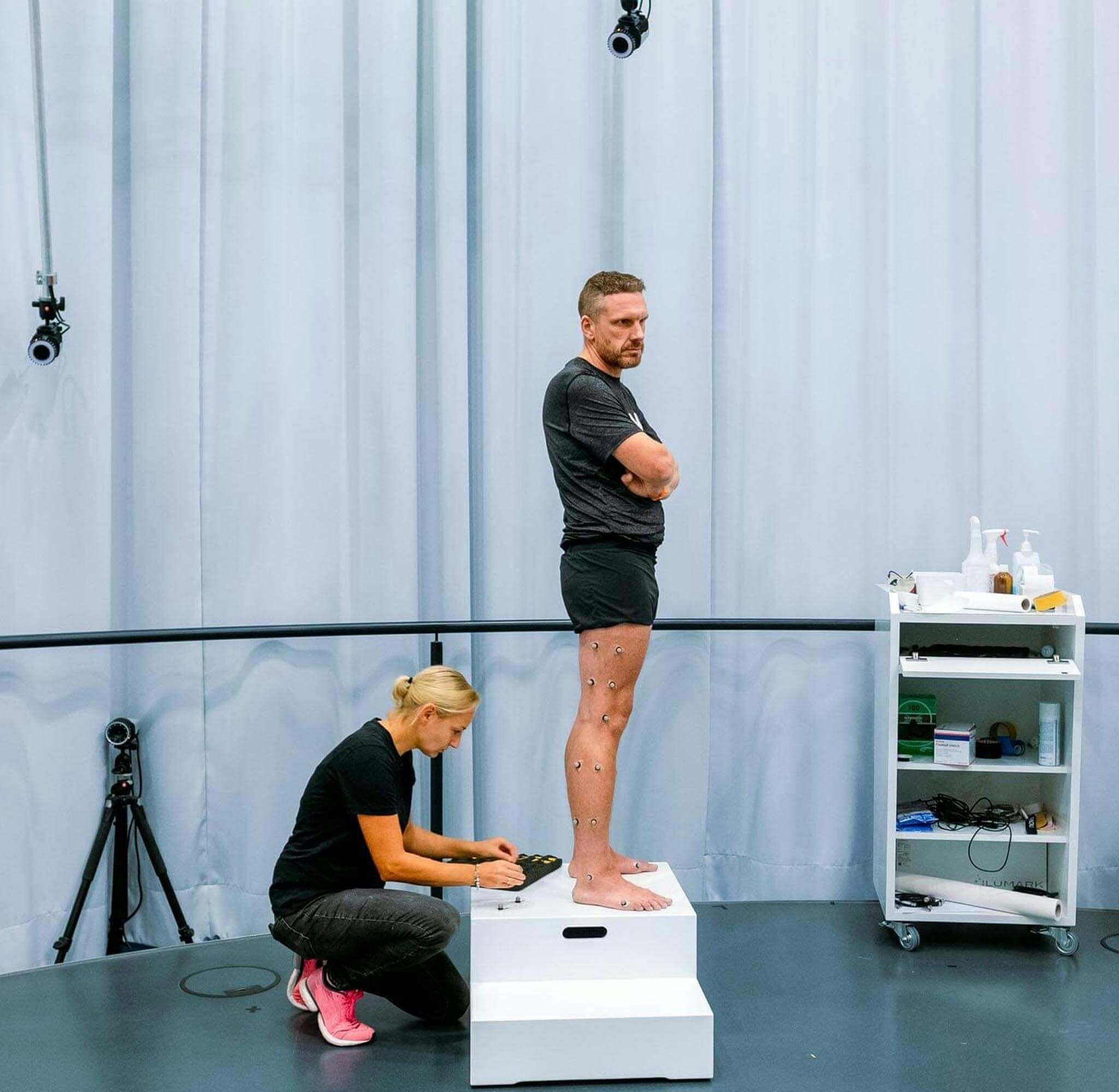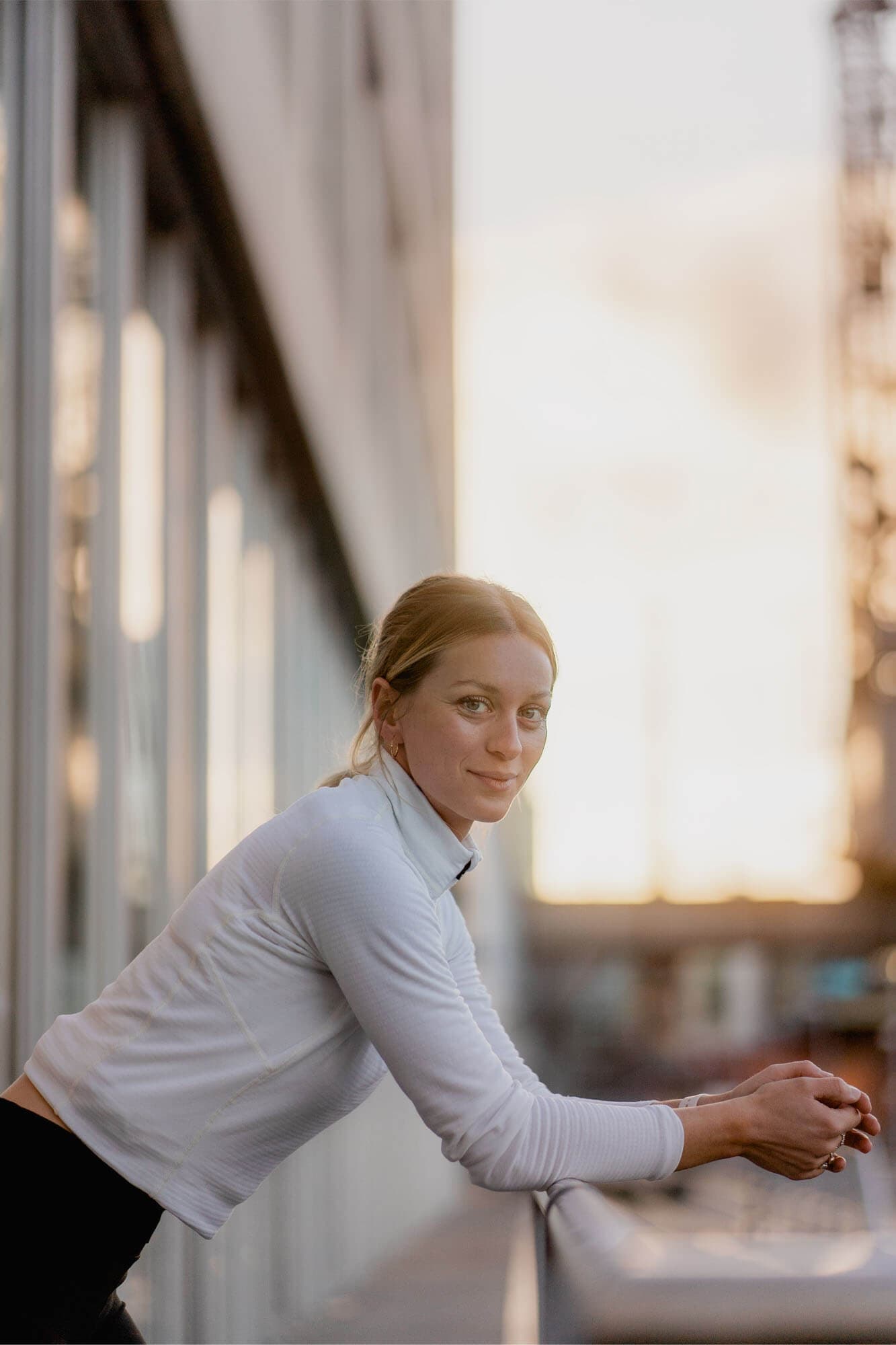
Paulina is a sports physiotherapist and a runner herself.
FROM RUNNING BREAK TO FUNCTIONAL THERAPY:
WHAT IF WE GET HURT?
If we feel pain while running, there is only one reasonable consequence for us at first, to interrupt our training and reduce the acute load on the affected area. If the discomfort or even pain does not go away or keeps coming back, we have little choice but to seek medical help. We need a reliable diagnosis in order to act accordingly and avoid more serious secondary injuries. What it means for us as runners to be injured, how we can get fit again as quickly as possible, and how important it is to heal injuries completely – a look at the treatment approaches of physiotherapy reveals it.
Running injuries. Too often, they still keep us from running when we really want to. Half of all runners get injured at least once a year. Or, to put it another way, on average, about 0.6 injuries occur in 1,000 kilometers of running. In Germany alone, this affects up to twelve million people.[1] Remarkably, the risk of injury from running remains high.
Running injuries are basically all due to the same cause: overuse of a tissue beyond its current stress limit – or fatigue failure due to repeated stress close to the individual stress limit. This is what we call overuse injuries (Chapter 4, Part 1: It’s all a question of (too much) stress: Why we get injured while running).
The video shows the force distribution while running in the U-TECH Aion next gen.
The video shows the force distribution while running in the U-TECH Aion next gen.
Such overuse injuries are caused by various factors, such as our training condition, a sudden change in running behavior, or the choice and biomechanics of our running shoes. If we fail to reduce the load on our structures, injuries are imminent. And once we are seriously injured, it can take several weeks and months before we can run again without complaints.
We need patience, a treatment individually tailored to us and our injury, and a high degree of self-discipline in order to get fit again as quickly as possible.
WHAT WE CAN DO ABOUT RUNNING INJURIES
If we have injured ourselves, we usually notice it very quickly. We feel the pain while running – and often in many other movements during the rest of the day. At first, only one thing helps, namely relieving the affected tissue. “Once at home, we can follow a simple mnemonic for the initial treatment of sports injuries – the RICE rule. There are four steps to follow: rest, ice, compression, and elevation,“ explains Paulina Kohlhaas, a self-employed sports physiotherapist in Girona, Spain, and a passionate runner herself (Find out more about Paulina and her job here).
Rest: “If we feel pain while running, we should interrupt our run. This is our body’s way of telling us that it cannot fully tolerate the current load. We should try to relieve the painful region. In this way, we avoid making the injury even more severe.“
Ice: “Intuitively reaching for the cold pack is the right idea. If we cool the injured structures, we counteract swelling and further bleeding. In addition, cold relieves pain.“
Compression: “Applying a pressure bandage stabilizes the damaged structures on the one hand and counteracts swelling on the other. By applying pressure, we prevent further bleeding.“
Elevation: “If we elevate the injured body part, we facilitate blood reflux. This can reduce swelling and pain.“
In order not to take any risks and avoid secondary injuries, but especially if the pain persists and is recurrent, we should seek medical advice.
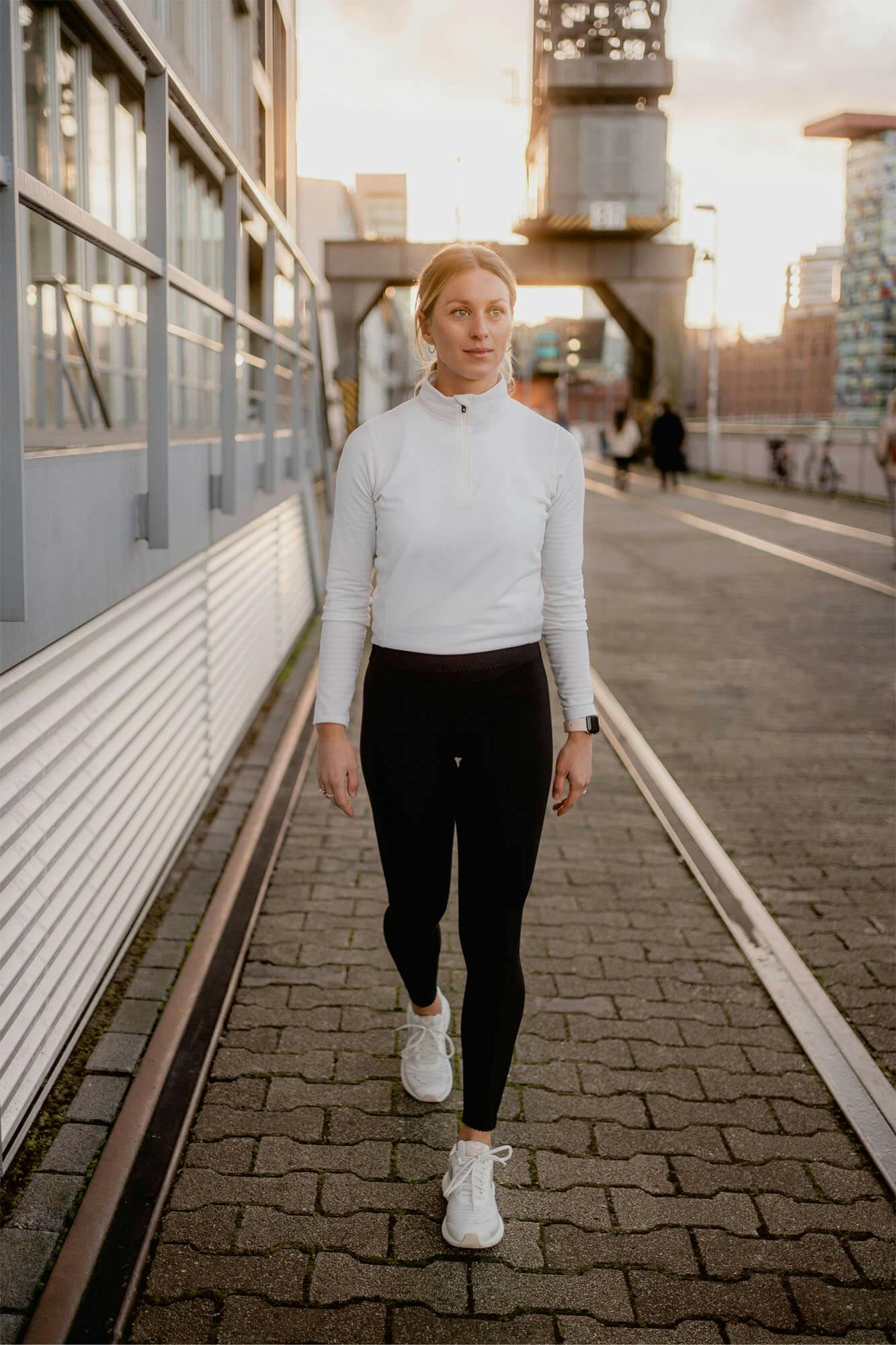
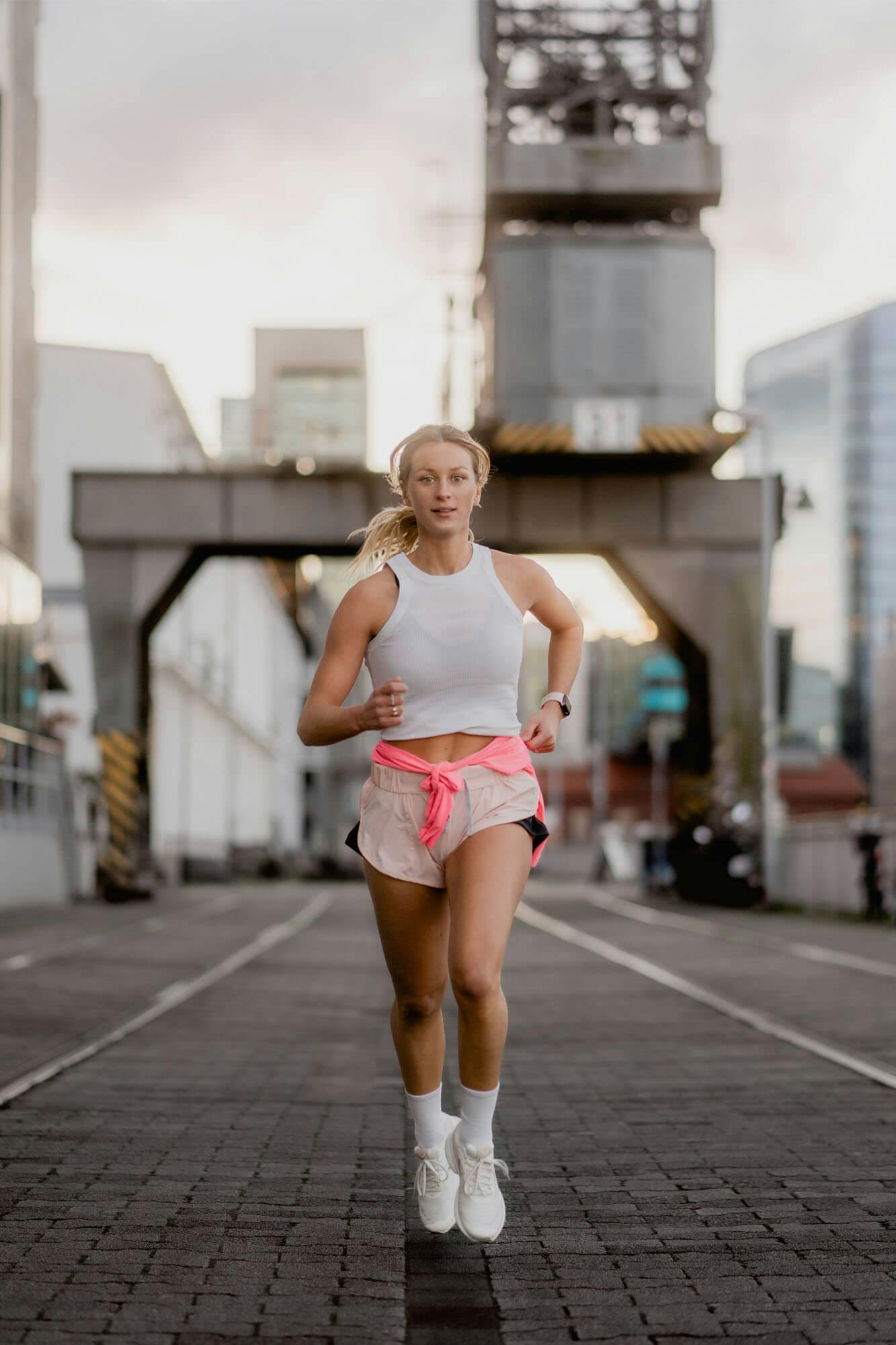
MEDICAL DIAGNOSIS FOR THE BEST POSSIBLE TREATMENT PLAN
“In most cases, runners can localize the pain very well themselves,“ explains Gert-Peter Brüggemann, professor of biomechanics and co-founder of True Motion. “However, a doctor must ultimately determine which injury is present with the help of clinical tests and imaging methods, such as ultrasound, X-ray or, if necessary, magnetic resonance imaging (MRI).“
This is the only way to determine for sure where our pain is coming from – and what treatment methods are appropriate to help us recover as quickly and fully as possible. For a complete recovery and a controlled restoration of the performance level, many runners use physiotherapy.
WITH PHYSIOTHERAPY TO OLD STRENGTH
“The first therapy session is about getting to know the patient and the injury. I read the medical report and get an idea of the degree of injury,“ says Paulina Kohlhaas, describing her first steps in treating new patients. She then develops an individual treatment plan.
Typical running injuries such as runner’s knee or Achilles tendonitis are characterized, as the name partly suggests, by an inflammatory phase. This must first be cleared out of the injured tissue before it can be subjected to greater stress again. However, this does not mean that we should completely immobilize the injured body part until then – on the contrary. “During the inflammation phase, the main thing is to maintain mobility and prevent too much functional degradation,“ Paulina emphasizes. “Securing the full range of motion prevents the injured tissue from becoming even more unstable.“
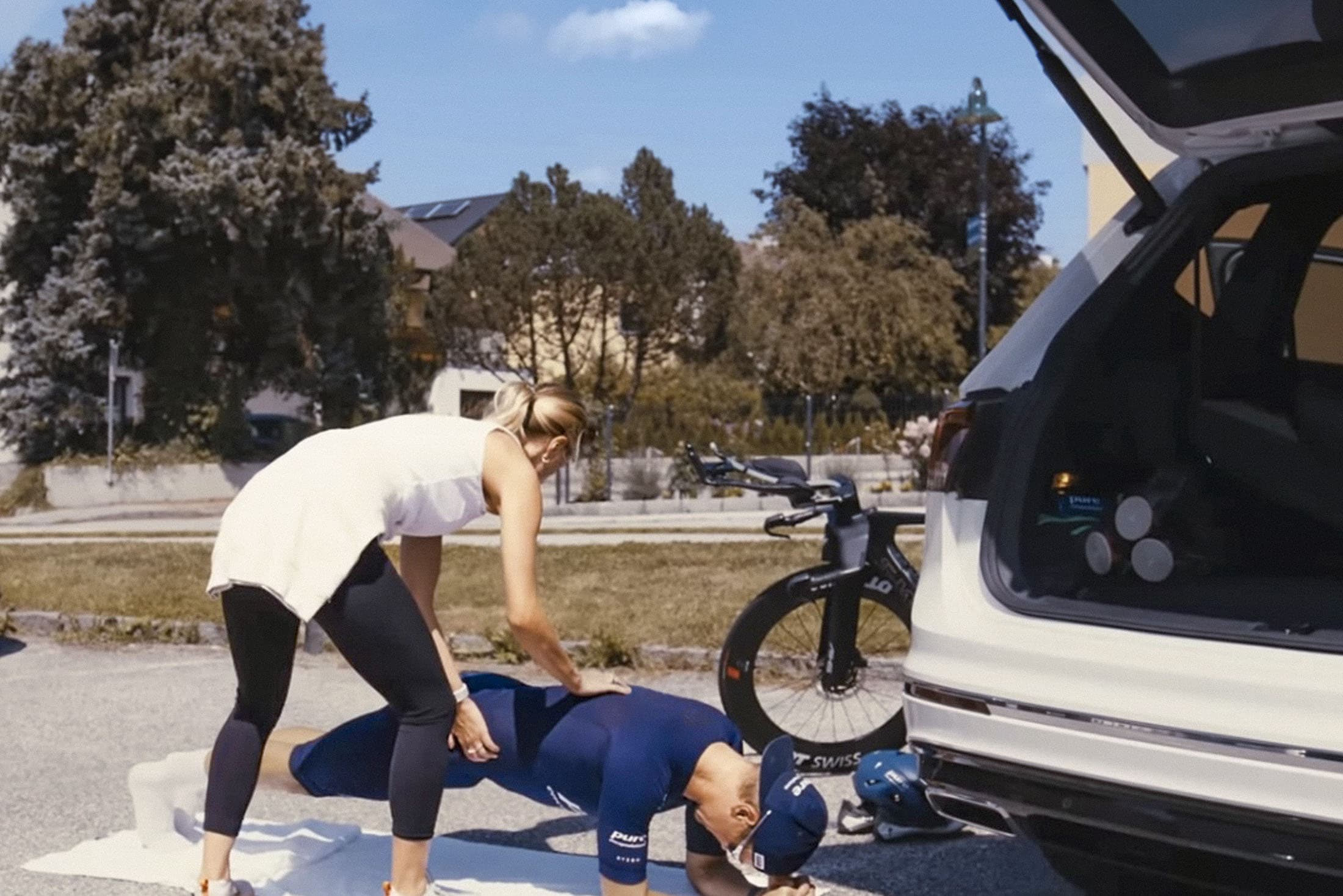
Paulina Kohlhaas works with an athlete. Photo: Filmrausch
The healing process is faster and more efficient if the injured structures are alternately relieved and functionally loaded. Functional loads are many times lower than “normal“ loads in a healthy state. This interplay promotes blood flow to the tissue and ensures effective regeneration of the injured structures.
A process that takes time. It takes time before we can run again without worries, whenever and wherever we want. If we increase the load too soon, our injury will flare up again and we will have to start over. Not surprisingly, there’s a saying among us athletes, “You learn from your injuries“. In the best case, so much so that we can reduce our own risk of running injuries.
But how do we do that?
PREVENTING RUNNING INJURIES PROPERLY
To avoid getting injured in the first place, there are a number of things to keep in mind. For example, injury-free running requires adapted strength training. “If our running workload increases, we also need to intensify our strength training – so that the body is prepared for higher loads,“ explains Prof. Brüggemann. “Strong muscles stabilize our joints and help prevent incorrect loads.“ Then, when running, if a strong muscle gets tired, it still has the potential to control joint movement. Thus, we protect ourselves.
But it’s not just our training regimen that affects how injury-prone we are when we run. Above all, the choice of running shoes influences the injury frequency of runners, as a study published in the “Sportärztezeitung“ shows.[2] In this context, we should make sure to choose running shoes that match our individual running style and let us run in our natural, own way. Biomechanical running shoes with U-TECH™ technology do just that.
U-TECH™ is a midsole technology that has been modeled on human structures in form and function – such as the menisci in the knee or the fat pad around the heels. “Biomechanical running shoes reduce the unnecessary stresses on our bodies, thereby reducing the main cause of running injuries,“ explains Brüggemann.
The results of a recent study by the running magazine “LÄUFT“, the German Sport University Cologne, and the True Motion Research Laboratory show the body regions where runners get injured most frequently. The result: runners most frequently hurt their knees, followed by the Achilles tendon. Plus, the risk of injury differs significantly between the various midsole technologies. All results of the entire study will be available in the 5th chapter of our Run Better Project, starting July 5.
LITERATURE
CHAPTER 4 (PART 2)
[1] With approx. 24 million runners in Germany. Source: IFD Allensbach (2022), Allensbacher Markt- und Werbeträger-Analyse (AWA 2022).
[2] Brüggemann, G.-P. (2023). Einfluss von Sohlentechnologien: Muskuloskelettale Belastung beim Laufen. Sportärztezeitung. Issue 02/2023.
CHAPTER 5 (PART 1) ________
WHERE WE GET INJURED WHILE RUNNING
The Run Better Research Study provides insight on running injuries. Find out where we get injured - and what it has to do with our running shoes in Chapter 5.
→ READ CHAPTER 5 (JULY 5TH)
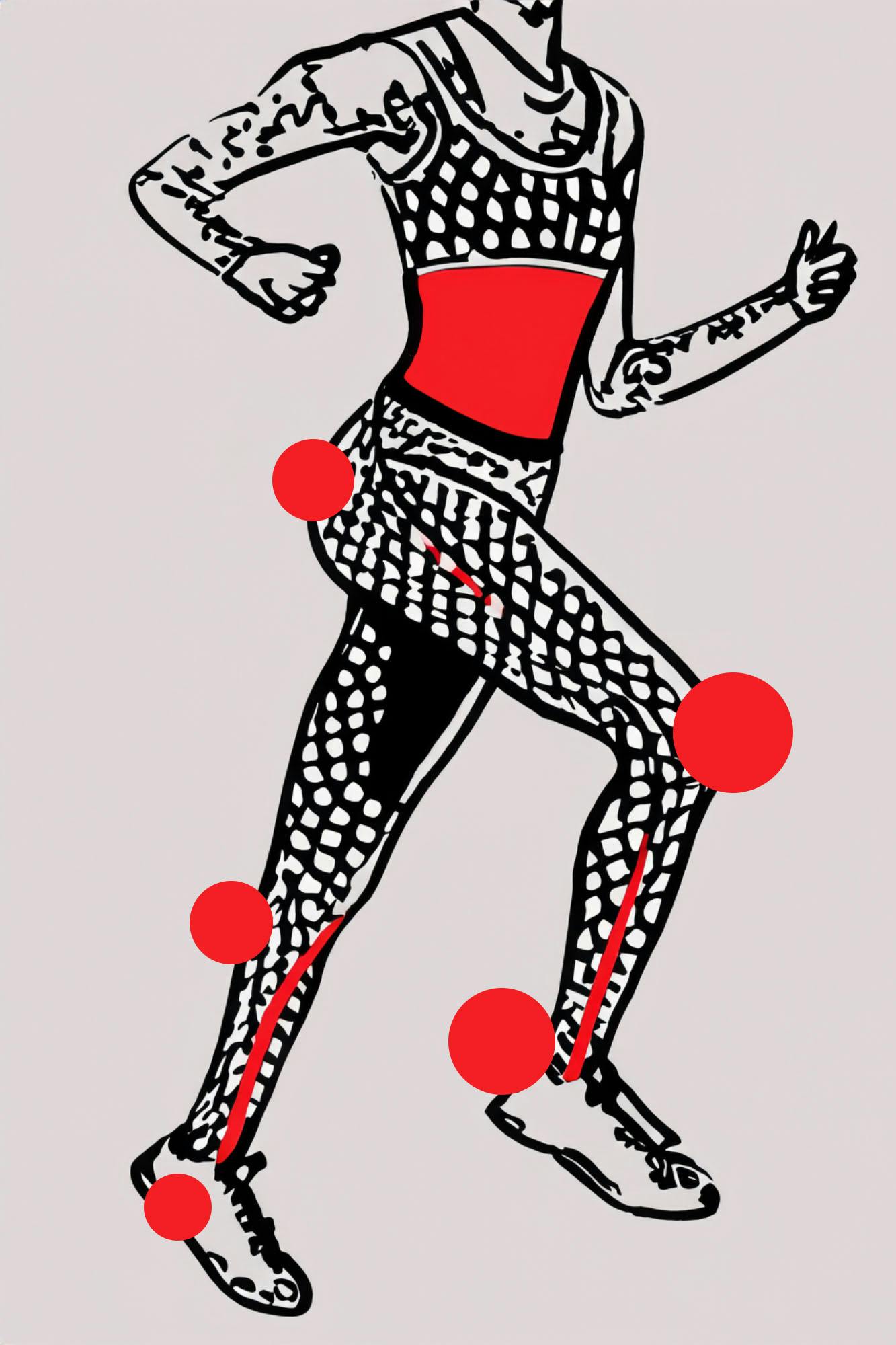

RESEARCH AND DEVELOPMENT:
SCIENTIFICALLY VALIDATED TECHNOLOGIES
Almost 100 % of our technology is derived from scientific findings and biomechanical research. Prof. Dr. Gert-Peter Brüggemann, head of the Institute for Biomechanics and Orthopedics at the German Sports University Cologne for decades, is largely responsible for this. Over the past 25 years, he has been part of numerous innovative running shoe developments – and thus a sought-after expert among the giants of the industry.
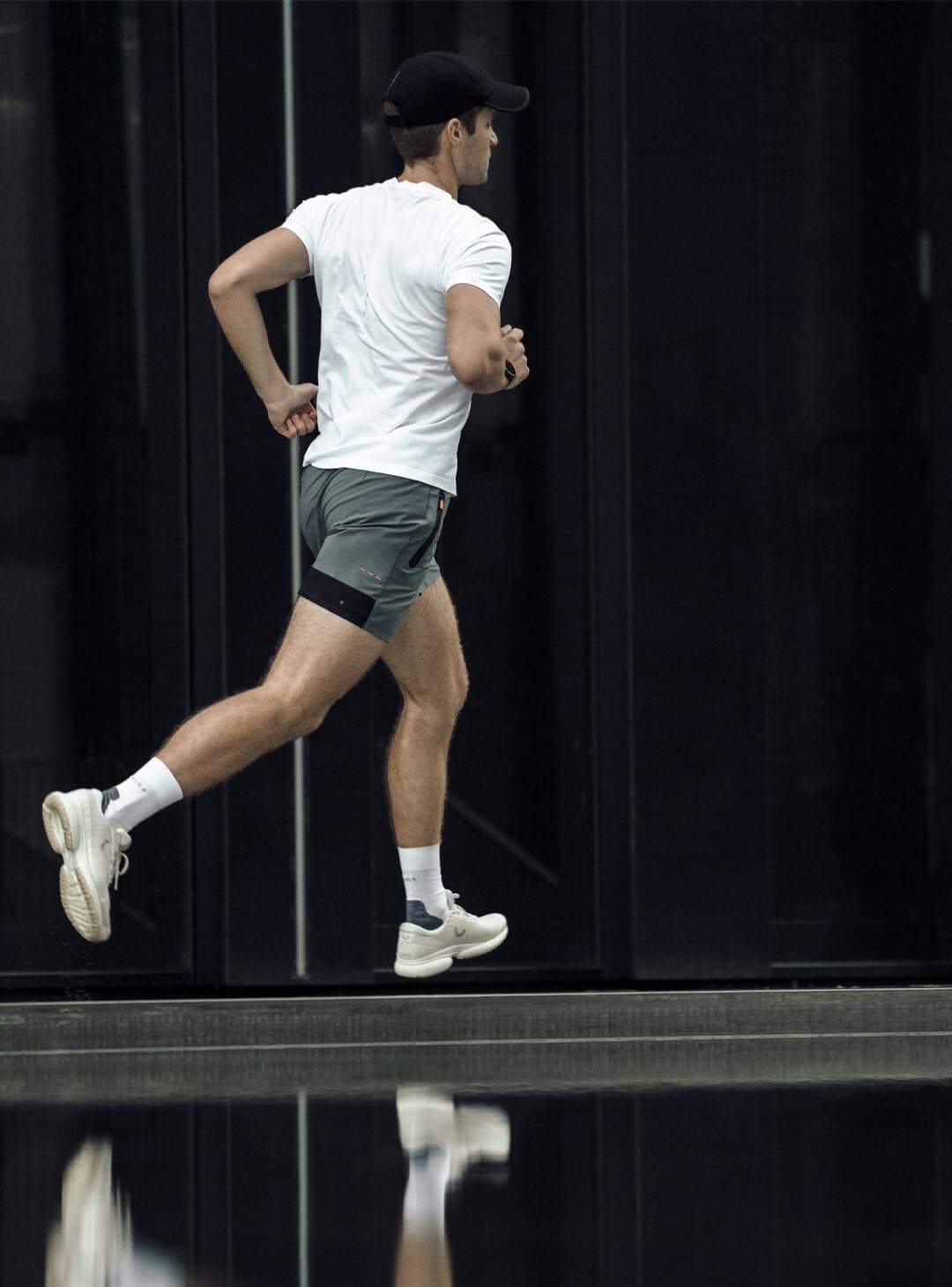
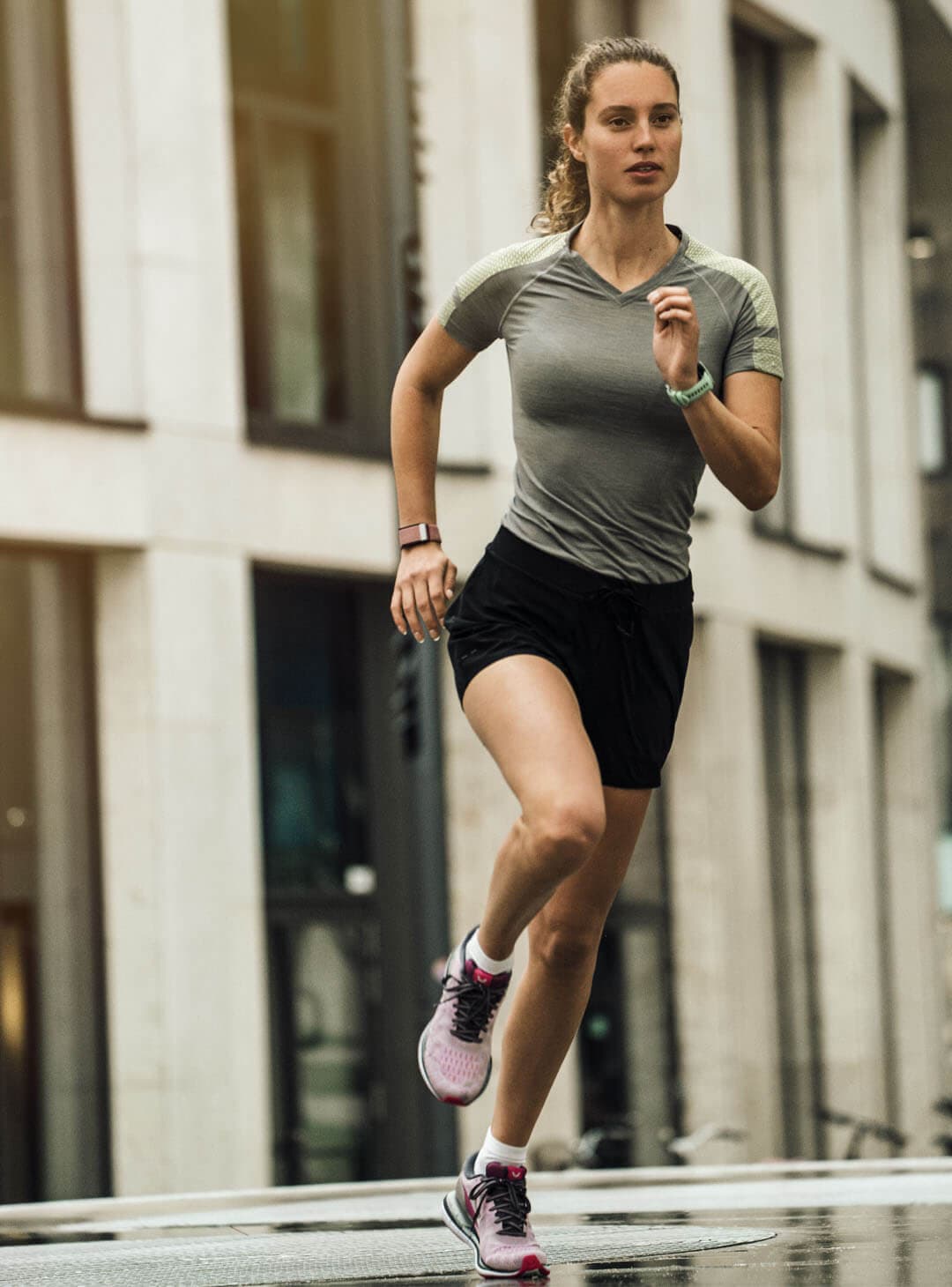
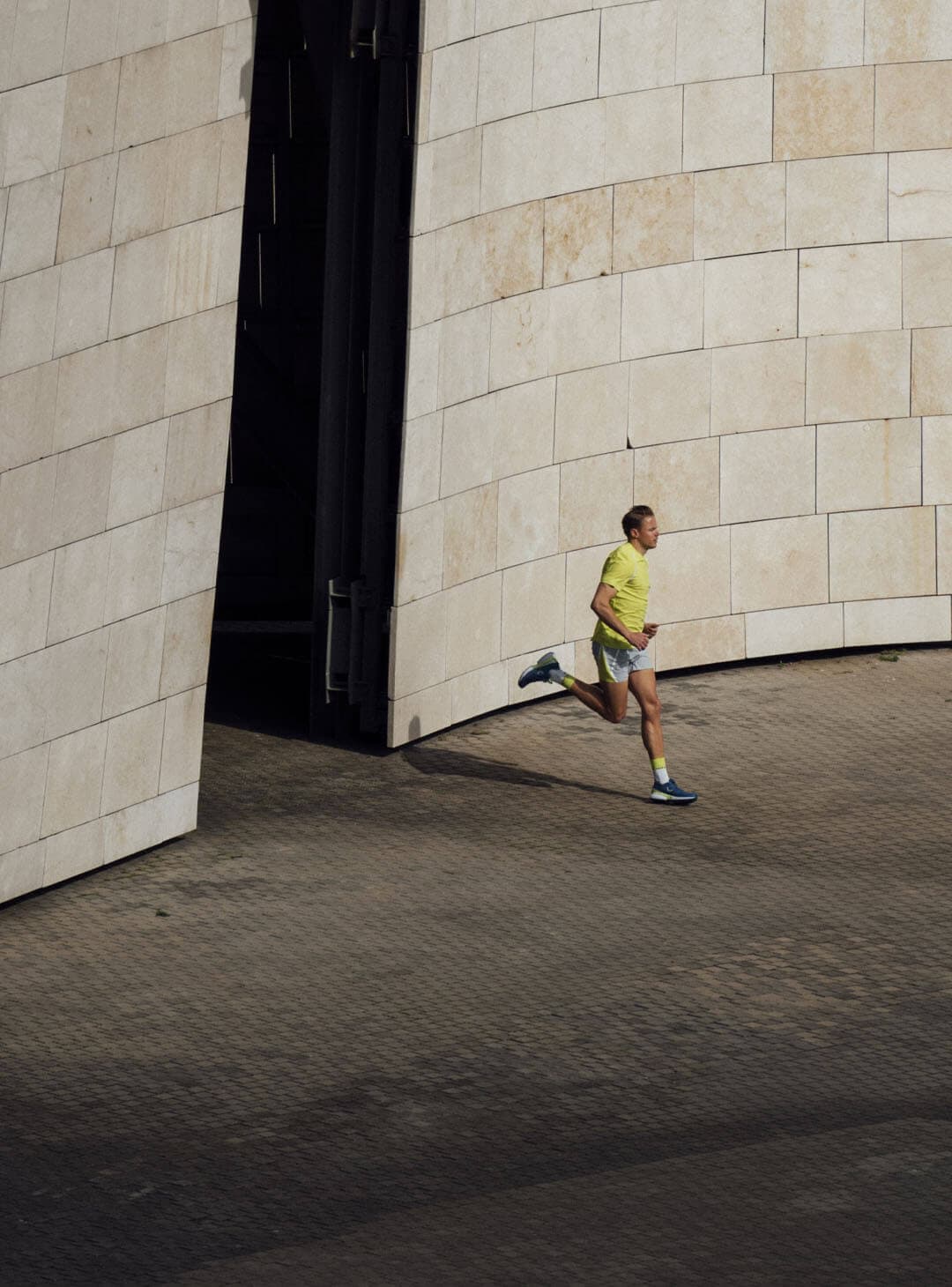

NEVER RUN OUT OF
NEWS
Discover all True Motion stories – and be the first to hear about new products, promotions and events. Simply, center your run!
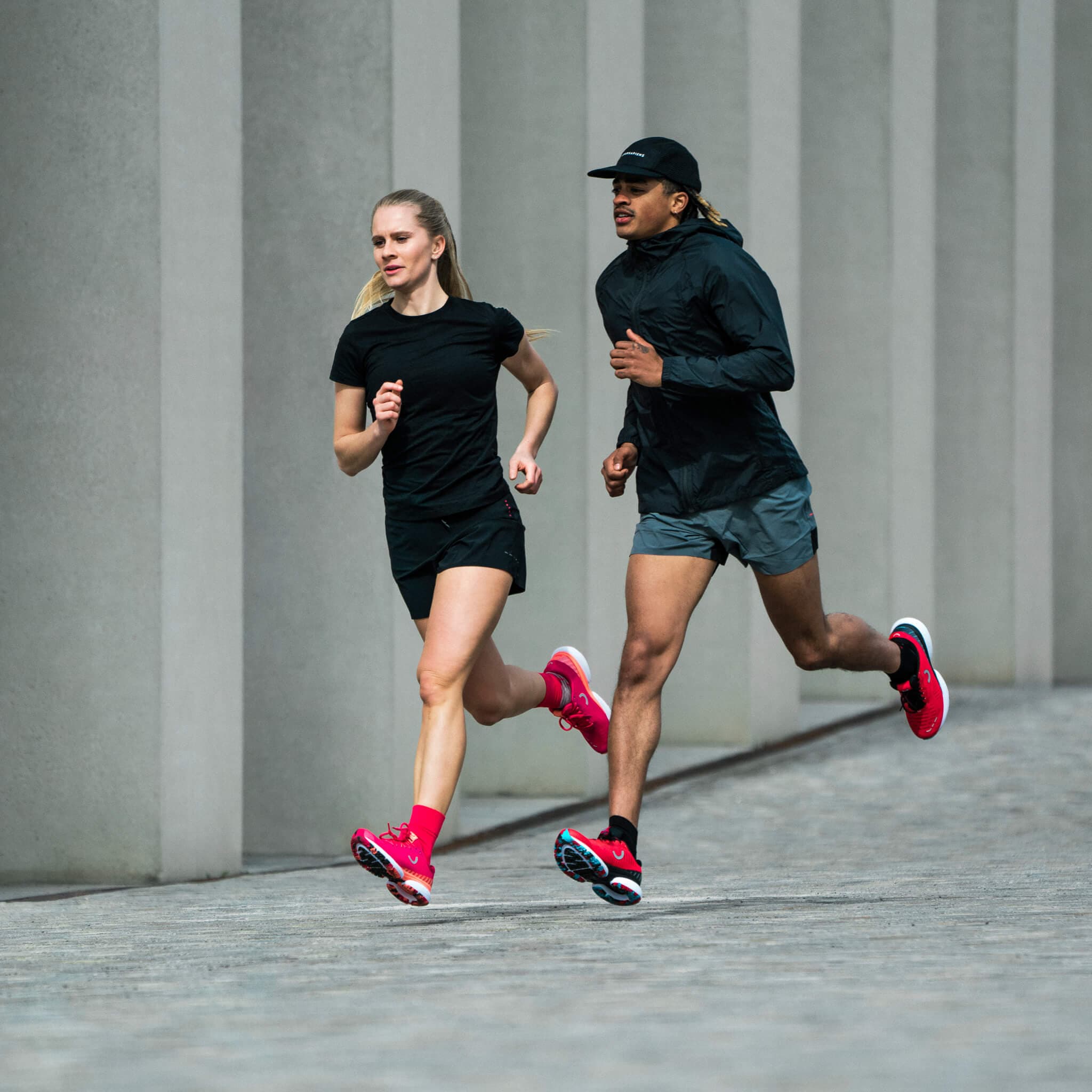
NEVER RUN OUT OF
NEWS
Discover all True Motion stories – and be the first to hear about new products, promotions and events. Simply, center your run!
RECOMMENDED BY








RECOMMENDED BY








GET 10 % OFF YOUR FIRST ORDER!
Get your personal running updates with exclusive discounts, product news, training plans and tips for healthy running - straight to your inbox. 10% discount on your next order.
SERVICE
ABOUT US
© 2025 True Motion Running GmbH

